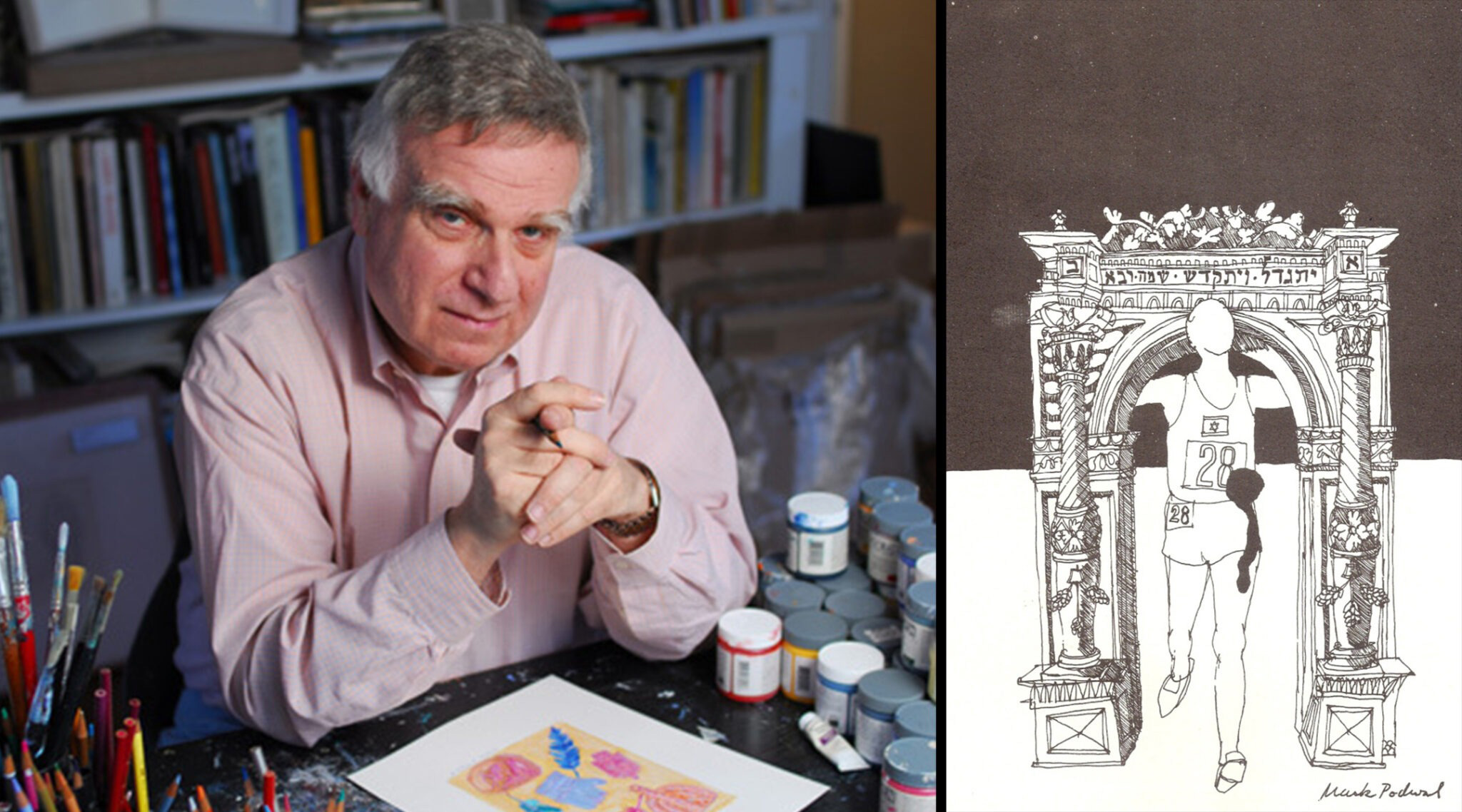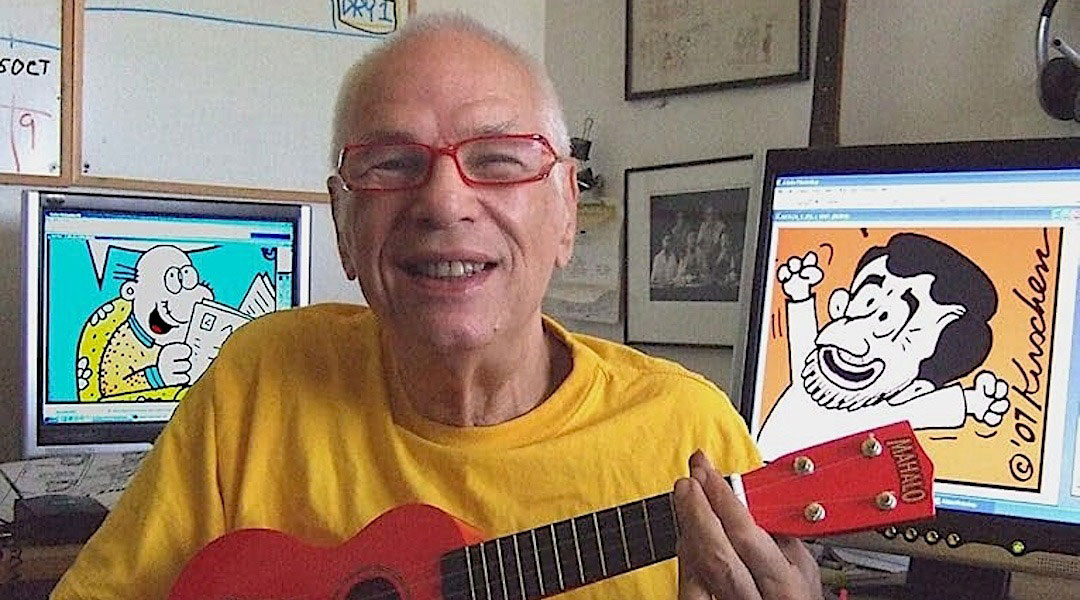Courtesy of JTA. Photo credit: Wikipedia
The artist Mark Podwal in his studio in 2007; at right, his illustration “Munich Massacre,” drawn in memory of Israeli athletes killed by Black September terrorists during Summer Olympics in Munich, was published in the New York Times in 1972
(JTA) — Admirers of artist Mark Podwal’s work tended to describe the visual puns, metaphors and transformations that were his signature.
“A city grows out of an open book.”
“A child’s noisemaker can become a gallows for the wicked.”
“A Jewish runner — identified by an Israeli flag emblem on his or her bib — passes not through finish-line tape, but an arch with columns and floral designs, typical of title-pages of Jewish books.”
In illustrations like these — created for children’s books, major newspapers, synagogue tapestries and gallery walls — Podwal devised a Jewish visual vocabulary that made him one of the best known Jewish artists of his era. He also became the only working dermatologist whose works on paper are included in the Metropolitan Museum of Art’s Modern and Contemporary Art Collection.
The novelist Cynthia Ozick once compared him to a Hasidic master, writing that he “can fire magic into visual being, and can actually reverse nature and society.”
Podwal, who lived in New York, died Friday. He was 79.
Ozick’s praise was included in the 2016 book “Reimagined: 45 Years of Jewish Art,” a retrospective of his work that included a foreword by his friend Elie Wiesel. Podwal illustrated an edition of Wiesel’s “Jews of Silence,” a book about Soviet Jews, and in 1983 collaborated with Wiesel on “The Golem,” a version of the folktale set in medieval Prague, a city for which the artist had a particular affinity. Podwal accompanied Wiesel to Oslo when the Holocaust survivor accepted the Nobel Peace Prize in 1986.
“They became not only close friends but co-authors as well, as Mark’s imaginative artwork breathed color and life into the Jewish tales they told together,” the Elie Wiesel Foundation wrote in a tribute.
The New York Times frequently commissioned his illustrations, including a portfolio, appearing a week after the terror attacks of 9/11, depicting homes, businesses and offices flying the American flag.
Nevertheless, he invariably returned to Jewish themes. Last year, the Museum at Eldridge Street, in a renovated 19th-century synagogue on the Lower East Side, featured Jewish woodcuts from the 16th century that Podwal had “revised” with contemporary references. A limited edition of his archival prints, tracing Jewish history through the words of the psalms, was first exhibited at the Terezin Ghetto Museum in the Czech Republic.
“Museum directors and curators have urged me to broaden my subject matter — to become an artist more universal rather than being limited by Jewish content, but my heart is with the Jewish experience,” Podwal told the New York Public Library last year.
He also designed the stage backdrop for a 1981 Simon and Garfunkel concert in Israel.
Throughout his career as an artist, which drew praise from figures as diverse and well-known as Mel Brooks and the historian David McCullough, Podwal continued to serve on the faculty at NYU’s Grossman School of Medicine, where he taught dermatology.
Podwal was born June 8, 1945, and was raised in the Fresh Meadows neighborhood of Queens, New York. His father, a bar owner, encouraged him to pursue a medical career. His mother, Dorothy, came to America in 1929 with her parents at the age of 8, and often spoke of her brother, David, who was unable to emigrate at the time and was later killed in Treblinka. Her mother suffered a breakdown upon hearing the news, and spent the last 18 years of her life in a psychiatric hospital in Queens.
“I’ve been told that my Uncle David drew very well,” Podwal told the New York Jewish Week in 2016. “I’d like to believe that my talent in art is a gift to his memory.”
He first began drawing seriously as a medical student at NYU, and his work was exhibited at the medical school’s main hall and appeared on covers of the Journal of the American Medical Association. Political drawings that he completed in his fourth year of medical school were published in his first book, “The Decline and Fall of the American Empire,” published in 1971, and were exhibited at a Madison Avenue art gallery. He pursued dermatology as a specialty rather than the more consuming surgical track so he would be able to devote more time to his art.
In the Jewish Week interview Podwal described himself as a “non-observant Orthodox Jew.”
“My drawing is my way of participating in Judaism,” he said. “It’s a form of prayer.”
Podwal’s survivors include his wife Ayalah, and sons Michael and Ariel.





